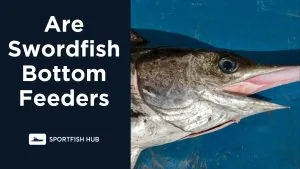Sharks have an incredible sense of smell that allows them to detect prey from great distances away. But exactly how far can sharks smell blood in the water? This article explores the science behind sharks’ ability to detect blood and how far away they can pick up this scent.
Table of Contents
- Tracking Blood in Water
- Do Sharks Like Human Blood?
- The Shark’s Sensory System
- Factors That Impact Smelling Capabilities
- Conclusion
- FAQ
- How do sharks detect blood compared to other scents?
- Why are sharks so attracted to the scent of blood?
- Do all shark species have an equally good sense of smell?
- Is it true sharks can smell fear?
Tracking Blood in Water
Under optimal conditions, sharks can smell blood from up to a quarter mile away. However, it takes time for the scent molecules to reach the shark. The ability to smell blood depends on several key factors:
- Shark species – some sharks have a more powerful sense of smell than others
- Water currents – the speed and direction of currents impact how quickly scents travel
- Water conditions like temperature, clarity, and salinity affect sharks’ smelling capabilities
Sharks can pick up on minute concentrations of blood – as little as 1 part per million or 1 drop in an Olympic-sized pool. Contrary to myth, sharks do not go “crazy” when they first smell blood. Rather, they will investigate the source of the scent.
You might also be interested in reading: What Sounds Do Sharks Make?
Do Sharks Like Human Blood?
Contrary to popular belief, sharks do not like the smell of human blood. In fact, sharks can distinguish between the blood of fish and any other animal/human.
Recently a study was conducted with cow’s blood and fish blood where researchers dripped each type of blood in the ocean near surfboards. Interestingly, the sharks overwhelmingly went to the fish blood surfboard by a count of 134 to 8.
The Shark’s Sensory System
- Sharks have specialized sensory organs called ‘ampullae of Lorenzini‘ that allow them to detect electric fields in water. These pores on a shark’s snout pick up on electric signals from muscle movements.
- Nostrils contain receptors that can detect scent molecules dispersed in water currents. Sharks have thousands of olfactory receptors in their nostrils.
- The lateral line system along a shark’s body detects vibrations and movements in the surrounding water.
- Sharks also have excellent vision and hearing that aid in detecting prey.
Factors That Impact Smelling Capabilities
| Factor | Effect on Smelling Ability |
|---|---|
| Water Temperature | Colder water reduces shark’s metabolism and smelling ability |
| Water Clarity | Murky water makes it harder to pinpoint blood source |
| Salinity | High salinity impairs olfactory receptors |
| Currents | Disperses scent molecules, making source harder to find |
Conclusion
While sharks can detect even minute amounts of blood from reasonably far away, their ability depends greatly on environmental conditions and the specific capabilities of each species. Scent alone is not always enough for sharks to hone in on prey. But combined with their other sharp senses, sharks’ phenomenal sense of smell makes them highly effective ocean predators.
FAQ
-
How do sharks detect blood compared to other scents?
Sharks have specialized receptor cells that can detect the chemicals specific to blood. This allows them to differentiate blood from other scents in the water.
-
Why are sharks so attracted to the scent of blood?
For sharks, the smell of blood indicates the presence of injured or vulnerable prey. As predators, they are instinctually drawn to signs of weakened or injured animals.
-
Do all shark species have an equally good sense of smell?
No, there is variation among different shark species. For example, hammerhead sharks have an excellent sense of smell due to the wider positioning of their nostrils. Great white sharks also have an extremely sensitive sense of smell.
-
Is it true sharks can smell fear?
No, there is no scientific evidence that sharks can smell fear or specific human emotions. Their response is based on sensing blood or electrical signals of struggling prey.











